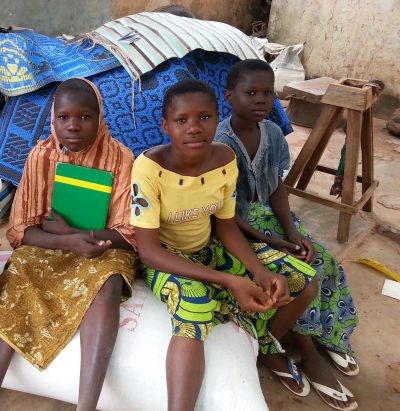
“We can do our school homework without mosquitoes biting us at home since our village has been sprayed.” Source: Africa IRS
In the West African country of Benin, malaria is the leading cause of morbidity and mortality among pregnant women and children under five. The PMI-funded Africa Indoor Residual Spraying (AIRS) project helps to prevent people from contracting this deadly disease by spraying residual insecticide on the walls and surfaces inside homes to kill mosquitoes, thereby interrupting the transmission of malaria.
Based on entomological monitoring in 2013, key stakeholders at the national level advised AIRS to use the insecticide pirimiphos-methyl, which has longer residual life (up to nine months) than the insecticide used previously, for all nine districts in the Actacora Region of northern Benin.
Although more effective, pirimiphos-methyl is nearly twice as expensive as the primary insecticide used in 2013. Insecticide is the single most expensive cost in IRS in Benin and can be the determining factor in the number of people protected in a spray campaign. Restricted to the same budget as that of 2013, AIRS was committed to covering the same nine districts and to protecting the same number of beneficiaries in 2014 despite the increased insecticide cost. However, AIRS would need a new operational approach to stay within budget.
AIRS conducted a cost-cutting analysis and identified several cost-savings strategies. First, AIRS increased the number of daily spray operators, supervisors, and team leaders by 50 percent, thereby reducing the number of spray days from 35 days to 20 days – the shortest spray time by PMI for an area of that size. As a result, transportation costs dropped significantly and per diem costs for spray teams decreased substantially.
AIRS also changed the structure of community mobilization. In the past, community mobilizers went out weeks ahead of spray teams to notify villages of the upcoming campaign and how to prepare their houses to facilitate the spraying. In 2014, mobilizers joined the spray teams to reduce time and transportation costs. The joint effort meant that mobilizers were able to help beneficiaries to move their belongings out of their homes on spraying day, which accelerated spray operations. The new mobilization effort combined with the increase in the number of spray operators resulted in a 50 percent increase in the number of structures being sprayed per day than in the 2013 campaign.
With the reduced operational costs and improved efficiency, AIRS was able to go beyond the government’s goal and protect approximately 790,000 people from malaria in 2014. That is nearly 100,000 more people than in 2013 without increasing the budget from the previous year.
